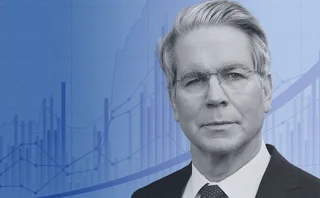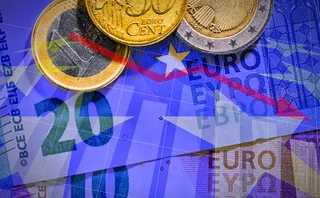Continued decline of the one-stop shop
Dealer Rankings 2024: Only two banks make the top 10 across all rankings tables – others have focused on vertical dominance

This article is part of our Dealer Rankings 2024 coverage. You can find the overview article here, analysis of the results by instrument and end-user here and a detailed methodology here.
Last year’s rankings showed most dealers had left behind the old, chest-thumping goal of being all things to all people. Only three landed on the top 10 lists across all of the instruments in the rankings, and across both client groups.
This year, that number is down to two – JP Morgan and Morgan Stanley. And
Only users who have a paid subscription or are part of a corporate subscription are able to print or copy content.
To access these options, along with all other subscription benefits, please contact info@risk.net or view our subscription options here: http://subscriptions.risk.net/subscribe
You are currently unable to print this content. Please contact info@risk.net to find out more.
You are currently unable to copy this content. Please contact info@risk.net to find out more.
Copyright Infopro Digital Limited. All rights reserved.
As outlined in our terms and conditions, https://www.infopro-digital.com/terms-and-conditions/subscriptions/ (point 2.4), printing is limited to a single copy.
If you would like to purchase additional rights please email info@risk.net
Copyright Infopro Digital Limited. All rights reserved.
You may share this content using our article tools. As outlined in our terms and conditions, https://www.infopro-digital.com/terms-and-conditions/subscriptions/ (clause 2.4), an Authorised User may only make one copy of the materials for their own personal use. You must also comply with the restrictions in clause 2.5.
If you would like to purchase additional rights please email info@risk.net
More on Markets
FX traders revel in March Madness
Chaotic Trump policies finally bring diversity to flows – to the delight of market-makers
Jacky Mak leaves HKEX to take career break
Industry veteran and Swap Connect pioneer announced resignation at weekend
Can Bessent lower 10-year yields? Investors have their doubts
Unconventional tools won’t sway bond markets, say buy-siders, with yields as likely to go higher as lower
J.P. Morgan Inverse VIX Futures ETN: a more intuitive approach to risk
J.P. Morgan’s new inverse Vix futures ETN, designed for a more stable risk profile
ALM desks await rebound after euro swap spread hit
Bank treasury desks still feeling pain on bond and asset swap positions that saw big losses last year
Inside the company that helped build China’s equity options market
Fintech firm Bachelier Technology on the challenges of creating a trading platform for China’s unique OTC derivatives market
Asia hours surge complicates FX options market-making
Late tariff announcements in US trigger hedging headaches during less-liquid Asia sessions
Buyout industry nervous as insurers choose gilts
Some bulk annuity providers are pricing deals assuming returns they ‘can’t achieve’ today








